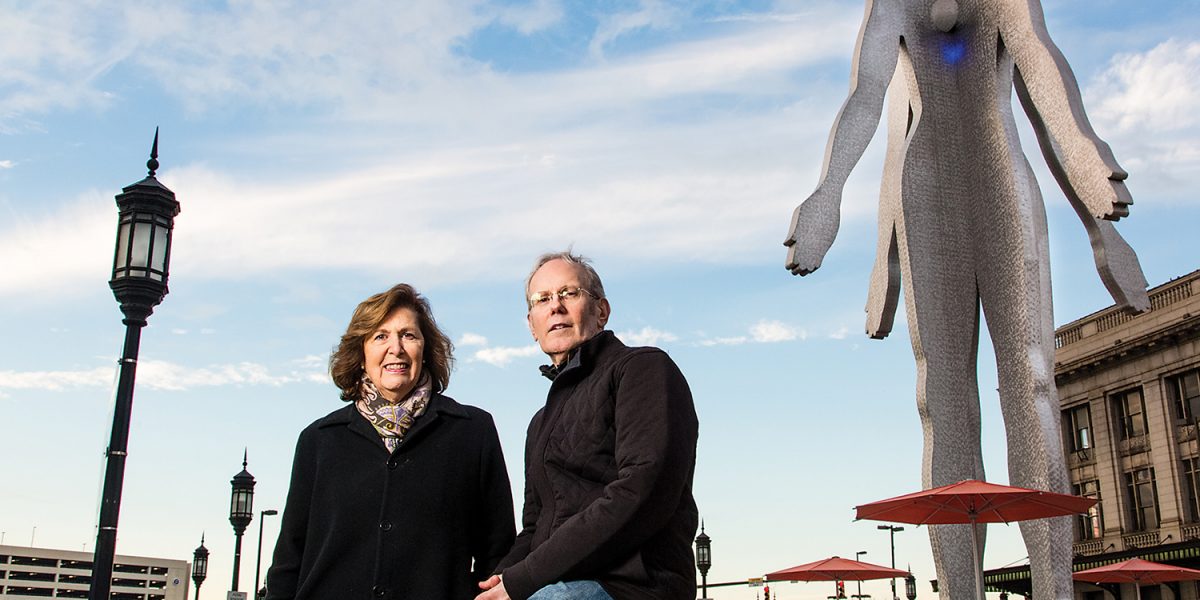Arts & Culture
Change of Heart
Ten years on, the divisive Male/Female statue earns reappraisal.
When Jonathan Borofsky’s Male/Female sculpture appeared in front of Pennsylvania Station 10 years ago, Richard Cleaver wasn’t a fan. “I thought it was too large,” he says.
But Cleaver, a contemporary artist who often takes trains to and from Penn Station, says he has changed his mind after repeated viewings.
“I realized it was the perfect scale,” he says. “It needs the monumentality.”
Cleaver joins a growing list of artists and scholars who have publicly boosted the often-maligned work. In fact, after a decade of existence—during which readers of City Paper more than once voted it Baltimore’s “Best Eyesore”—it seems Baltimoreans are finally warming to the 51-foot tall aluminum sculpture with intersecting male and female silhouettes.
An early defender was Bill Griffith, creator of the Zippy the Pinhead comic strip, in which the statue has appeared. John Waters likes it, too.
“I love the arts,” Waters said during a talk last fall at The Senator Theatre. “I even love the one in front of the train station here.”
Experts say it’s not uncommon for people to change their minds about art over time.
“The Eiffel Tower was detested” when it went up, says Rebecca Hoffberger, founder and director of the American Visionary Art Museum. “Now it’s an icon.”
There is local precedent for public reevaluation, too. When the Lafayette Monument in Mt. Vernon was built in the 1920s, “people thought the base was too high and the horse was too energetic,” says Cindy Kelly, author of Outdoor Sculpture in Baltimore: A Historical Guide to Public Art in the Monumental City. “Now Mt. Vernon is inconceivable without it.”
Rodney Cook, a local painter and art instructor, thinks context is one key to acceptance.
“The area has caught up with it,” Cook says of the surrounding Station North neighborhood, which now boasts several new buildings and other public art. Or maybe we just needed time to adjust. “Familiarity can breed tolerance,” Cook says, “and then maybe tolerance can breed appreciation.”
